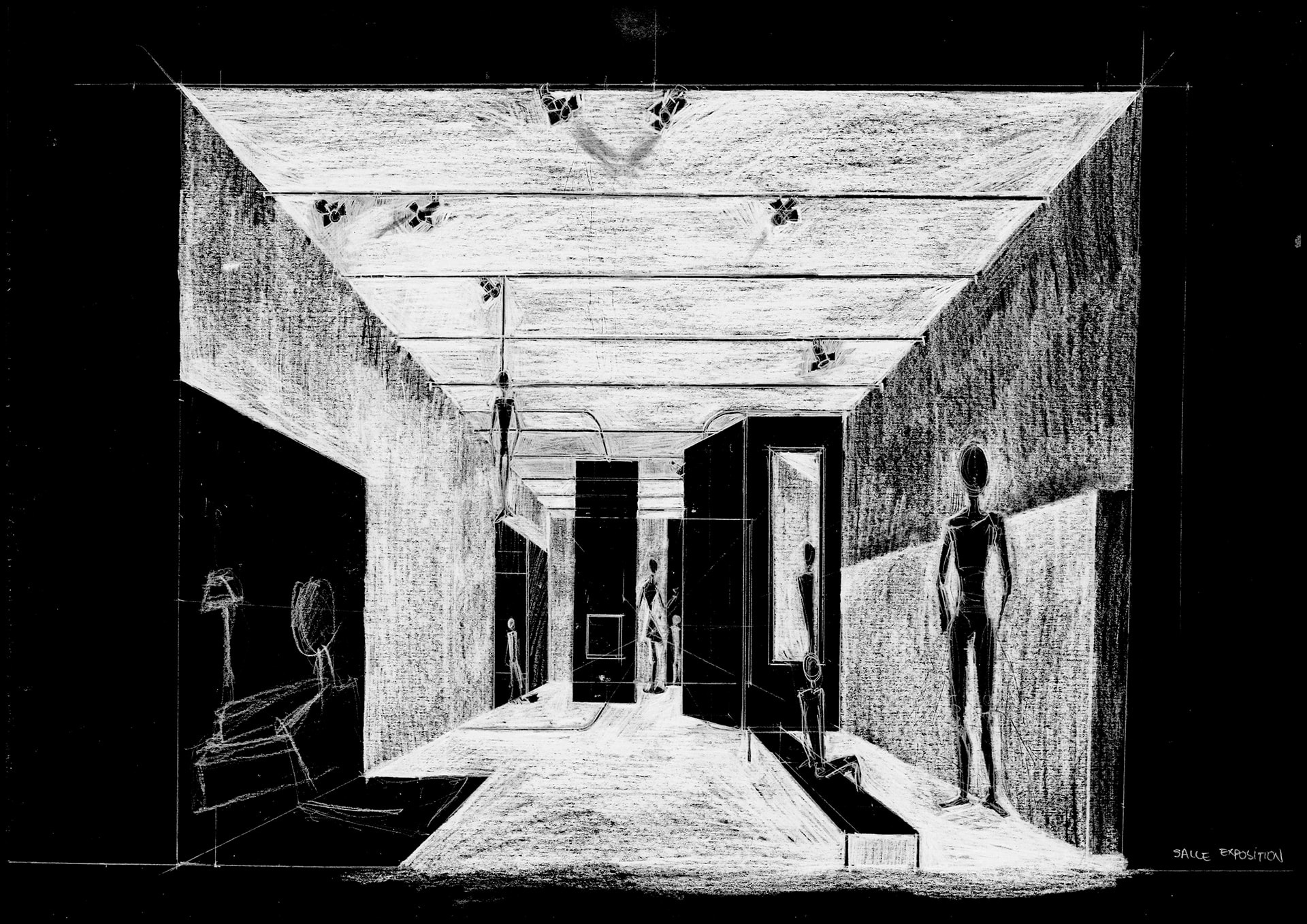LIGHTS, ACTION!
















Licence 1, 2nd Semester
April-June 2025
Coordinating Professor: Joanne Vajda
Within the framework of the Materiality and Constructive Cultures
studio, this project involved designing a house for an artist with
whom we were asked to collaborate. The site measured 27 × 11
meters and was to include a workshop of 80 m² and an exhibition
room of 60 m². The assignment served as a pretext to experiment
with various constructive techniques, particularly the use of
wood, and to learn how to design efficiently and sustainably, in
accordance with contemporary architectural standards. Themes such
as accessibility, cost, and natural light were central to the
development of the final proposal.
Designing a house for Elodie Chiper, a London-based scenographer,
required spacious and well-organized rooms, generous ceiling
heights, and above all, a play of contrast between light and
darkness.
The main façade opens onto the street with large windows and a
long bench-like platform, allowing pedestrians to glimpse inside
her workshop and inviting them to enter. While the entrance hall
and workshop are filled with light, the exhibition space is almost
entirely dark, enabling experiments with artificial lighting and
projection, as well as improved acoustics. At the center, a small
room serving as her digital studio and library, lets her observe,
like in a watchtower, every room, connecting the entrance, the
garden, and the two main rooms, thus positioning the artist at the
heart of her creative environment.
The courtyard becomes, at night, a projection space where visitors can view the artist’s creations.
A system of movable panels creates a modular space in the exhibition room, allowing the artist to adapt the layout according to the requirements of each exhibition.
A wooden post-and-beam structure is anchored to the ground through screw piles, slightly elevating the house and freeing the terrain beneath it.
Water management was a major consideration in this project. The first half of the roof directs rainwater into a circuit supplying the restroom, while the second half channels it toward a basin in the courtyard.